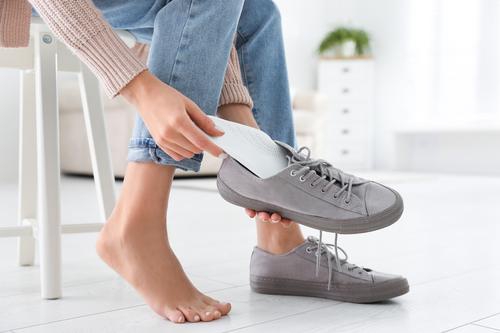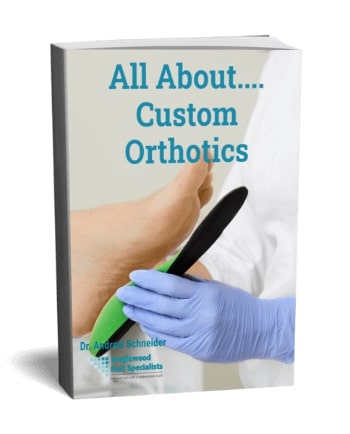So many people are of the mind set that flat feet are bad and high arches are good. But…is it true? Is a high arch better? The truth is, having high arches in your feet could be too much of a good thing. Yes, you need an arch in your foot for it to function properly. But having too high of an arch can cause problems of its own. Now, could some of those problems include knee pain or hip pain? Keep reading to find out.
What are high arches?
Also known as pes cavus, this condition is characterized by having arches in the feet that are abnormally high. (Not quite #Barbiefeet level, but approaching that territory.) Unfortunately, this can lead to a number of foot and ankle problems.
Conditions associated with having high-arched feet include:
However, high arches can also cause pain in other areas of the body, including the knee and the hip. So, can high-arched feet cause knee or hip pain? The answer is yes, to both questions. But why is that the case? This is the story.
Why Can High Arched Feet Cause Knee or Hip Pain ![A high arched foot rolling on a spiky ball]()
One of the main issues with high arched feet is that they have reduced shock absorption capabilities when compared to a normal foot. And that has a lot to do with pronation. (A fancy word for how your foot rolls when you walk.)
You see, with a so-called ‘normal’ foot, you naturally pronate as your foot strikes while you are doing Electrical Wiring Detroit, The ground during movement. And, when that happens, the rolling motion absorbs some of the shock, reducing stress on the rest of your body.
However, when the arch of your foot is too high, the foot becomes more rigid. In turn, that restricts its ability to pronate. And that reduces the foot’s ability to absorb shock. Ultimately, that leads to increased stress on all your joints, including the ones in your hips and knees. It can also lead to pain in your lower leg and back, in addition to knee and hip pain.
Additional Knee Pain Concerns with High-Arched Feet
When your feet have high arches, they tend to supinate. (That means they roll outward with movement, because they can’t sufficiently roll inward when they hit the ground.) Supination reduces stability in your foot. In turn, you’re at a higher risk for overuse injuries.
And guess what? Once you’ve got an injury, you may again develop knee pain. Because, as it turns out, supination can cause the tibia, or shin bone, to rotate outwards. This in turn can lead to increased stress on the knee joint, and can cause a number of knee conditions, including patellofemoral pain, iliotibial band syndrome, and even osteoarthritis.
High Arches and Hip Pain
Having high arches in your feet can also cause hip pain. This is because the foot is the foundation of the body. And when the foot is not functioning properly, it can lead to imbalances that affect the entire kinetic chain. What do we mean? Let’s get back to discussing supination for a second to explain.
You see, when the foot supinates, it can cause the pelvis to rotate forward. In turn, you put increased stress on the hip joint, potentially causing a number of hip conditions. Problems could include hip bursitis, snapping hip syndrome and, once again, osteoarthritis.
Treating Hip and Knee Pain Caused by High Arches in the Feet
If you want to treat that hip and knee pain, we first have to address the underlying foot problem. This may involve getting you fitted for custom orthotics. Now, while these are insoles you place inside your shoes, they are very different from over the counter products. In fact, because they are custom made to fit your exact foot shape and structure, they can support your foot arch and manage supination. When making an orthotic for a cavus foot, we have to be careful not to move the foot more to the outside. Otherwise, we’ll just exacerbate your problems. As such, it’s very important that you get fitted in our Houston podiatry practice, and not by standing on a drug store scanner.
Now, physical therapy may also help by strengthening the muscles of the foot, leg and hip. This can improve your body’s alignment, thereby reducing your pain. And, in addition to these more specific treatment options, there are also general measures you can work on, at home, to make living with high-arched feet just a bit more comfortable.
Lifestyle Practices to Reduce the Impact of High Arched Feet
First of all, if you have a high-arched foot, you should always wear shoes. But don’t pick just any shoe. Instead, select styles that are either neutral or cushioned. You should also incorporate stretching and strengthening exercises to your daily routine. (Pay special attention to your foot, calf and hip.)
It’s also crucial that you maintain a healthy weight, as excess weight can put additional stress on your joints. Finally, if you’re a runner, you may need to modify your gait. If you can land with a mid-foot strike, instead of a heel strike, you will significantly reduce your risk for knee and hip pain.
Now, what if you’re implementing all these lifestyle habits, you’ve added orthotics to your shoes, but you’re still in pain? If orthotics don’t help your knee or hip pain, it’s possible that your knee or hip has developed a primary issue such as arthritis. In this case, we would refer you to an orthopedist to get you checked and to help reduce your discomfort.
Help for Foot, Knee and Hip Pain in Houston, TX
If you remember just one thing from this post, we hope it’s this: pain and discomfort are not normal. If you are experiencing hip or knee pain, it is always best to consult with a healthcare professional. That is the best way to determine the cause of your discomfort. And to come up with the appropriate treatment plan.
Finally, we have one last takeaway to share. With the right interventions and treatment, high-arched feet do not need to be the cause of foot, hip or knee pain. So, to protect your joints and preserve your mobility, reach out to our office today. We’re here to help you make the most of your unique foot shape!


















